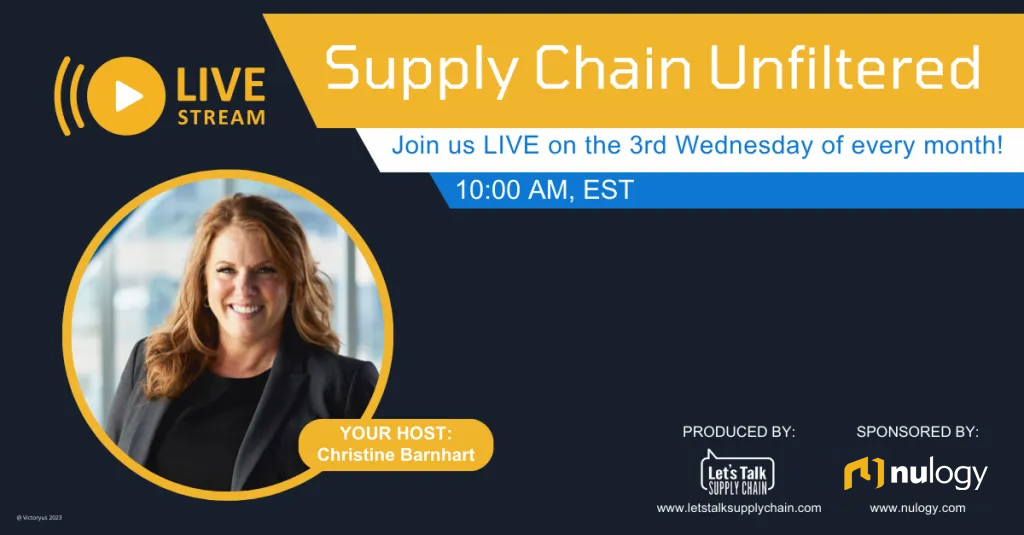In my previous two blog posts, I argued why CPG / FMCG brands need to evolve their external supply chain capabilities to empower more collaborative supplier relationships—with the goal of matching the speed of today’s volatile market.
In order to do so, consumer goods companies need to take a hard look in the mirror and reflect on the effectiveness of their current technological systems.
According to Gartner, “A digital partner ecosystem powered by technologies will foster collaboration, increase visibility and support better risk management. A solid network of relationships along the end-to-end supply chain is based on which supply chain leaders can engage suppliers with a common purpose, develop equitable relationships across communities and measure purpose achievement.”
Most industry 4.0 technology initiatives have focused on enabling enhanced internal supply chain capabilities. However, most supply chain practitioners realize that the majority of supply chain data originates outside the company and isn’t effectively captured, used or maintained in internally focused enterprise systems. The fact is, many consumer brand external supply chains are still technologically ill-equipped to improve visibility and collaboration amongst their external manufacturing and packaging suppliers—and consequently, cannot evolve their supply chain models from “single-enterprise” to “multi-enterprise” networks to truly reap the long-term business benefits of end-to-end supply chain digitization.
To set the stage: consumer packaged goods manufacturers rely on one or more of these mostly internally focused software solutions to manage their supply chain operations:
ERP solutions: For decades, ERP solutions have been a mainstay of supply chain operations—and that’s the problem. These monolithic solutions were structured during a bygone age when supply chains were still considered “linear”. ERP solutions are suitable as systems of record for transactional data, but not so great at handling complex supply chain operations due to their inflexibility. Additionally, ERP solutions are good at developing reports after the fact, but not as good at analyzing multiple “what-if” scenarios or running simulations to solve complex supply chain tradeoffs.
To these points, modern supply chains more resemble “ecosystems” or webs and less like “chains”: networks inhabited by a multitude of parties that need to share information at near real-time speeds in order to effectively pull in the same direction. By shoehorning ERPs into this role, we have been trying to hammer a square peg into a round hole for far too long.
Supply chain planning solutions: In the current era of global, complex, intertwined, multi-enterprise supply chains that are facing disruptions with increasing frequency, relying on solutions that are squarely focused on only managing a single company’s supply chain will not cut it. Over the past year, we have heard stories about consumer goods companies throwing their plans out the window due to huge variability in demand and supply from the ongoing COVID-19 pandemic. Supply chain disruptions are nothing new. In fact, it is estimated that the pandemic only represents 4% of total supply chain risk. In the past few weeks alone we have witnessed the Suez Canal crisis, a volcanic eruption, massive and destructive storms, shortages of microchips and rubber, and of all things: a shortage of ketchup. Raise your hand if you predicted a shortage of ketchup!
Planning alone isn’t enough. Today, it is more critical than ever for companies to gain real-time visibility into their external supply chains and actively collaborate with their partners if they hope to match the breakneck pace of today’s supply chain challenges.
Today, it is more critical than ever for companies to gain real-time visibility into their external supply chains and actively collaborate with their partners if they hope to match the breakneck pace of today’s supply chain challenges.
Procure to pay solutions: Gartner defines the procure-to-pay (P2P) solution market as integrated solutions with automated workflows to request, procure, receive and pay for goods and services across an enterprise.
On the surface, it may seem like these P2P solutions would provide the visibility needed for data sharing and collaboration between a consumer brand and its external manufacturing and packaging partners. However, P2P solutions are only focused on the procurement of goods and services and the management of the payment and invoice process. P2P solutions do not provide meaningful visibility into an external supplier’s operational performance or available capacities. In effect, a P2P solution’s visibility ends at the front door of the external supplier. As a result, a black hole exists between when an order is placed, and when that order reaches the receiving dock.
Compounding the inefficacy of these solutions is the myriad of discordant channels that a consumer packaged goods company still relies upon to communicate with its vast range of supplier partners. Trapped by a hodge-podge of phone calls, emails, and PDF attachments, it’s no wonder that so much time is lost trying to juggle files, analyze data, find exceptions and risk making costly mistakes, just trying to get everyone on the same page.
My point is that you wouldn’t drive with a blindfold on especially considering the high-performance vehicles we drive today. Why would you operate an external supply chain network without knowing what’s going on within it?
Why would you operate an external supply chain network without knowing what’s going on within it?
It’s time to take the blindfold off.
It’s imperative that consumer goods companies take the next step to technologically enable the network-wide visibility and real-time data that’s needed to work together in order to match the speed of today’s market volatility.
They need to run their external supply chain on a multi-enterprise network platform that enables true collaboration with their external manufacturing and packaging partners. Such a platform must provide a collaborative control tower view into real-time information on everything from capacity constraints, to order statuses, to on-hand materials and inventory, to production performance and quality attainment within their external supply chains, and facilitate the ability for a brand and their network of suppliers to work together to quickly analyze, collaborate and respond to shifting customer demands.
Now is the time for consumer packaging companies to take the next, most important step on their digital transformation journey. Waiting is no longer an option.
Are you focused on developing the mindset, processes, and tools for improving collaboration within your contract manufacturing and packing supply chain? Nulogy can help. We can illuminate and accelerate your external supply chain network and enable all partners to work better and smarter together.







